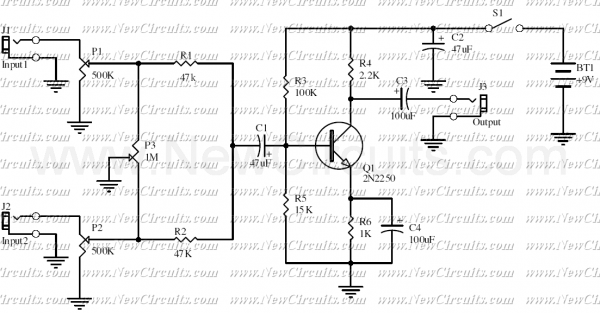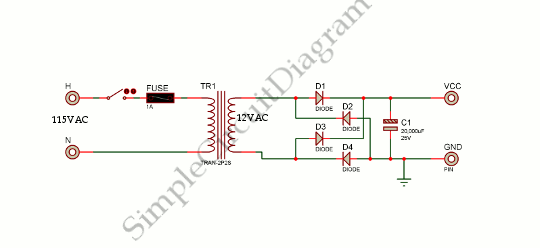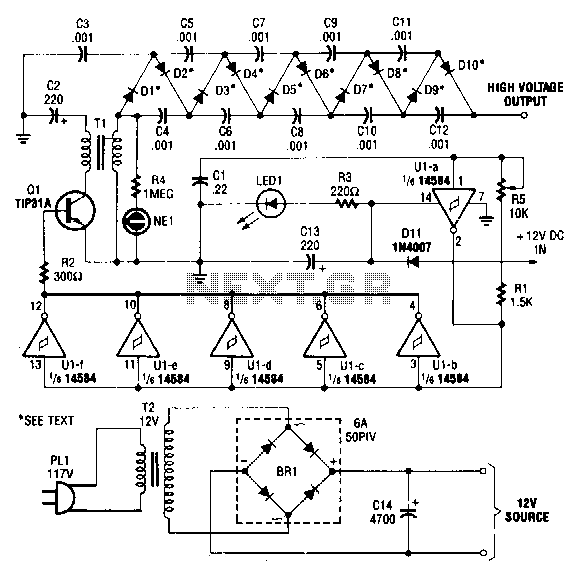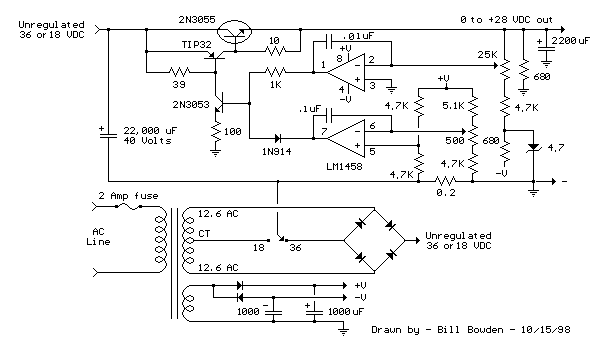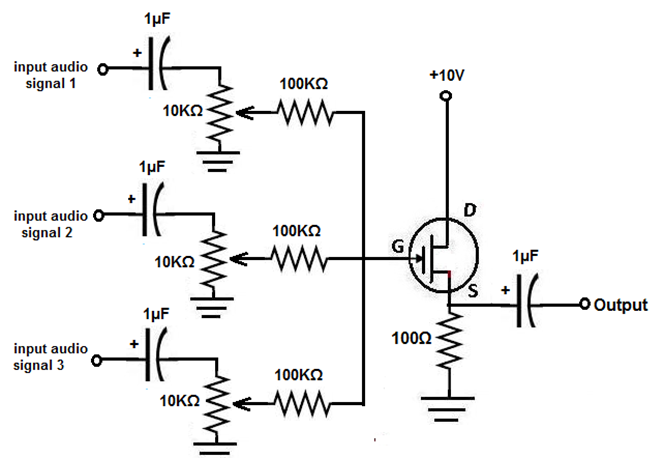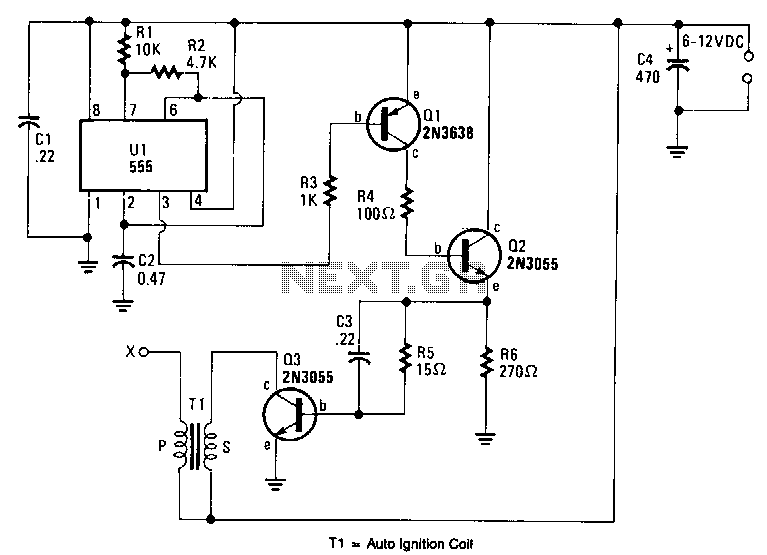
4 channels mixer voltage controlled

The audio mixer schematic proposed is developed around four amplifiers built inside the SSM2024 produced by Precision Monolithics Inc. (PMI) and is voltage-controlled (VR). The maximum VR voltage is 5.5 volts. The signal-to-noise ratio is 90 dB, and the bandwidth is 130 kHz. This four-channel mixer operates effectively at ±15 volts, but voltages between 9 volts and 18 volts can also be utilized.
The audio mixer circuit comprises four independent channels, each utilizing the SSM2024 operational amplifier, which is designed for high-performance audio applications. The SSM2024 features low distortion and a high signal-to-noise ratio, making it suitable for professional audio mixing tasks. The voltage-controlled aspect allows for dynamic adjustment of the gain, enabling precise control over the audio signal levels.
The circuit's power supply can be configured to operate within a range of 9 to 18 volts, with a nominal operating point of ±15 volts, which is optimal for achieving the desired performance characteristics. The 90 dB signal-to-noise ratio indicates that the mixer can effectively handle audio signals with minimal background noise, ensuring clarity in the output.
The bandwidth of 130 kHz is sufficient for most audio applications, accommodating a wide range of frequencies from bass to treble. This feature is crucial for maintaining audio fidelity across different types of audio signals. The mixer can be used in various applications, including live sound reinforcement, studio recording, and broadcasting.
In summary, the proposed audio mixer schematic leverages the capabilities of the SSM2024 amplifiers to deliver a versatile and high-quality mixing solution for audio engineers and professionals. Its design considerations, including voltage control and signal integrity, make it a reliable choice for demanding audio environments.The audio mixer schematic we propose is developed arround 4 amplifiers build inside SSM2024 produced by Precision Monolithics Inc. (PMI) and is voltage controlled (VR). The maximum VR voltage is 5. 5Volt. The signal/noise ratio is 90dB and 130Khz band wide. This 4 channels mixer works great at +- 15Volt but you can use voltages between 9Volt and 18 Volt. 🔗 External reference
The audio mixer circuit comprises four independent channels, each utilizing the SSM2024 operational amplifier, which is designed for high-performance audio applications. The SSM2024 features low distortion and a high signal-to-noise ratio, making it suitable for professional audio mixing tasks. The voltage-controlled aspect allows for dynamic adjustment of the gain, enabling precise control over the audio signal levels.
The circuit's power supply can be configured to operate within a range of 9 to 18 volts, with a nominal operating point of ±15 volts, which is optimal for achieving the desired performance characteristics. The 90 dB signal-to-noise ratio indicates that the mixer can effectively handle audio signals with minimal background noise, ensuring clarity in the output.
The bandwidth of 130 kHz is sufficient for most audio applications, accommodating a wide range of frequencies from bass to treble. This feature is crucial for maintaining audio fidelity across different types of audio signals. The mixer can be used in various applications, including live sound reinforcement, studio recording, and broadcasting.
In summary, the proposed audio mixer schematic leverages the capabilities of the SSM2024 amplifiers to deliver a versatile and high-quality mixing solution for audio engineers and professionals. Its design considerations, including voltage control and signal integrity, make it a reliable choice for demanding audio environments.The audio mixer schematic we propose is developed arround 4 amplifiers build inside SSM2024 produced by Precision Monolithics Inc. (PMI) and is voltage controlled (VR). The maximum VR voltage is 5. 5Volt. The signal/noise ratio is 90dB and 130Khz band wide. This 4 channels mixer works great at +- 15Volt but you can use voltages between 9Volt and 18 Volt. 🔗 External reference
